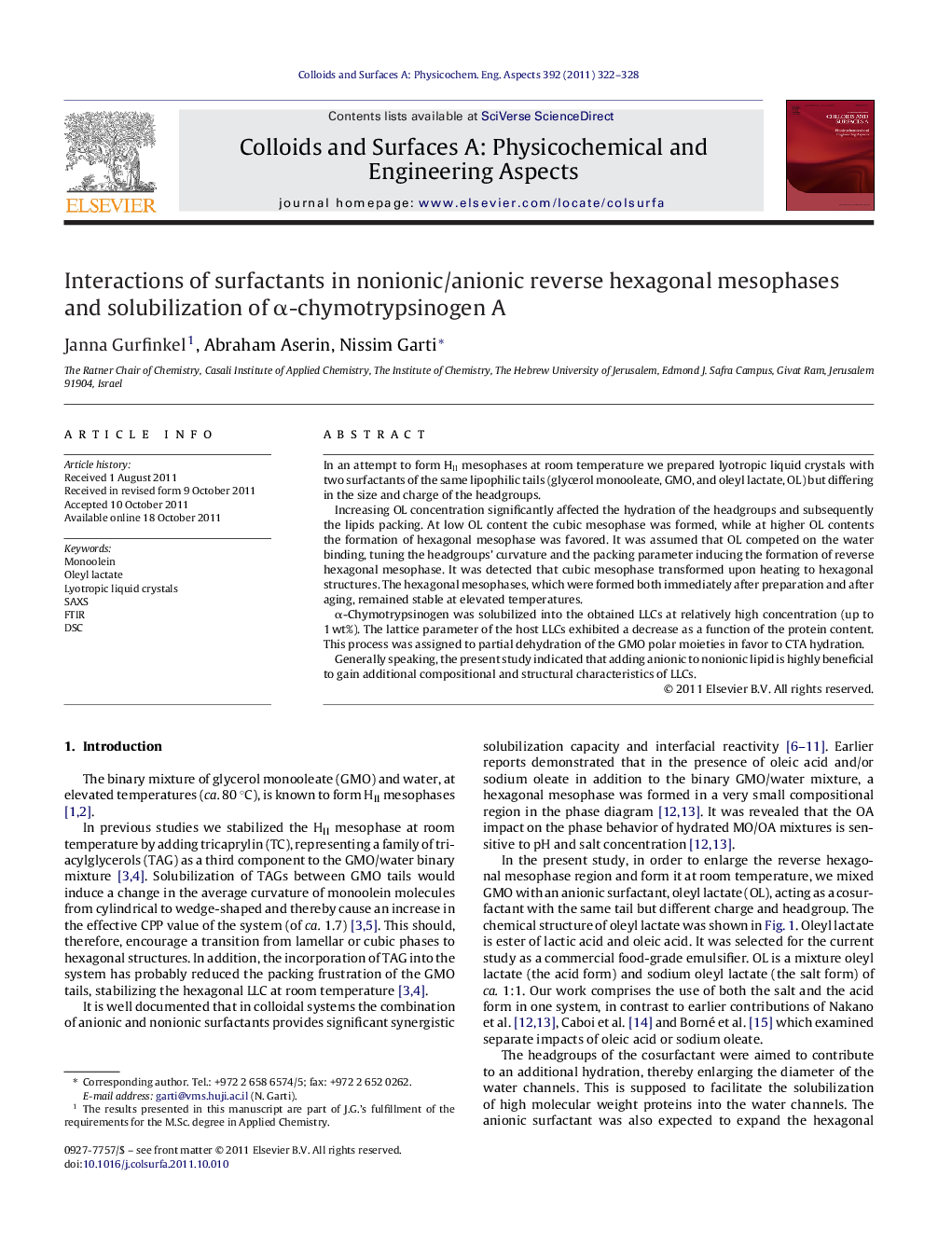| Article ID | Journal | Published Year | Pages | File Type |
|---|---|---|---|---|
| 594410 | Colloids and Surfaces A: Physicochemical and Engineering Aspects | 2011 | 7 Pages |
In an attempt to form HII mesophases at room temperature we prepared lyotropic liquid crystals with two surfactants of the same lipophilic tails (glycerol monooleate, GMO, and oleyl lactate, OL) but differing in the size and charge of the headgroups.Increasing OL concentration significantly affected the hydration of the headgroups and subsequently the lipids packing. At low OL content the cubic mesophase was formed, while at higher OL contents the formation of hexagonal mesophase was favored. It was assumed that OL competed on the water binding, tuning the headgroups’ curvature and the packing parameter inducing the formation of reverse hexagonal mesophase. It was detected that cubic mesophase transformed upon heating to hexagonal structures. The hexagonal mesophases, which were formed both immediately after preparation and after aging, remained stable at elevated temperatures.α-Chymotrypsinogen was solubilized into the obtained LLCs at relatively high concentration (up to 1 wt%). The lattice parameter of the host LLCs exhibited a decrease as a function of the protein content. This process was assigned to partial dehydration of the GMO polar moieties in favor to CTA hydration.Generally speaking, the present study indicated that adding anionic to nonionic lipid is highly beneficial to gain additional compositional and structural characteristics of LLCs.
Graphical abstractIncorporation of oleyl lactate into monoolein/water system enabled to obtain reverse hexagonal mesophase, stable at room temperature. α-Chymotrypsinogen A protein was solubilized into the swelled cylinders of the hexagonal structure.Figure optionsDownload full-size imageDownload as PowerPoint slideHighlights► Lyotropic mesophases (LC) were prepared using monoolein (GMO) and oleyl lactate (OL). ► OL compete on the water binding with GMO, regulating the headgroups’ curvature to form HII LC. ► α-Chymotrypsinogen A was solubilized into the swelled cylinders of the hexagonal structure.
